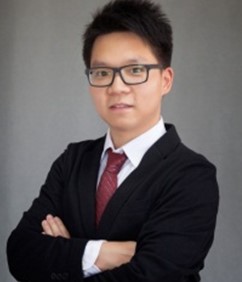
搜索网站、位置和人员

新闻与活动 活动信息
工学院学术研讨会 Engineering Colloquium: Triplet Energy Transfer from Semiconductor Nanocrystals to Organic Molecules: Fundamentals and Applications
时间
2021年5月14日(周五)
下午3:00-4:30
地点
西湖大学云栖校区2号楼611室
主持
西湖大学工学院PI 李兰
受众
全体师生
分类
学术与研究
工学院学术研讨会 Engineering Colloquium: Triplet Energy Transfer from Semiconductor Nanocrystals to Organic Molecules: Fundamentals and Applications
时间:2021年5月14日(周五)下午3:00-4:30
Time:14 May, Friday 2021, 3:00-4:30 PM
地点:西湖大学云栖校区2号楼611室
Venue: Room 611, 6F, Building 2, Yunqi Campus
主持人:西湖大学工学院PI 李兰
Host: Dr. Lan Li, PI of School of Engineering, Westlake University
主讲嘉宾/Speaker:

吴凯丰教授,中国科学院大连化学物理研究所
Prof. Kaifeng Wu,Dalian Institute of Chemical Physics, Chinese Academy of Sciences
Kaifeng Wu obtained his B.S. degree in materials physics from University of Science and Technology of China (2010) and his PhD degree in physical chemistry from Emory University (2015). After his postdoc training at Los Alamos National Laboratory, he moved to China to start his independent research in 2017. His current work focuses on the ultrafast spectroscopy and device applications of low-dimensional optoelectronic materials. His recent independent research has led to a series of publications, including those in Nat. Commun. (4), J. Am. Chem. Soc. (9), Angew. Chem. Int. Ed. (4), Chem., Nano Lett. etc. He is the winner of the 2020 Chinese Chemical Society Prize for Young Scientists, 2019 Robin Hochstrasser Young Investigator Award by the Chemical Physics journal, and 2018 Victor K. LaMer Award by the American Chemical Society. He also serves as the Early Career Editorial Advisory Board of Journal of Chemical Physics.
讲座摘要/Abstract:
In recent years, sensitization of molecular triplets using inorganic semiconductor nanocrystals via triplet energy transfer (TET) has emerged as a new area with potential applications ranging from photochemical photon upconversion to organic synthesis. We investigated the fundamental mechanisms of the inorganic/organic TET by building well-defined model systems and applying state-of-the-art time-resolved spectroscopy tools. In doing so, we uncovered the essential role of quantum confinement of nanocrystals in facilitating electronic coupling required for triplet energy transfer. We also established a unified picture of charge-transfer-mediated triplet energy transfer mechanisms, which greatly expanded the scope of molecular triplet sensitization using nanocrystals. Additionally, we demonstrated that nontoxic nanocrystals such as CuInS2 and InP were also capable of sensitizing molecular triplets for efficient photon upconversion. These contributions will serve as a roadmap for the design of nanocrystal-molecule triplet sensitization systems for photon upconversion as well as many other photochemical applications.
讲座联系人/Contact:
工学院办公室
戴老师 daixueping@westlake.edu.cn

















